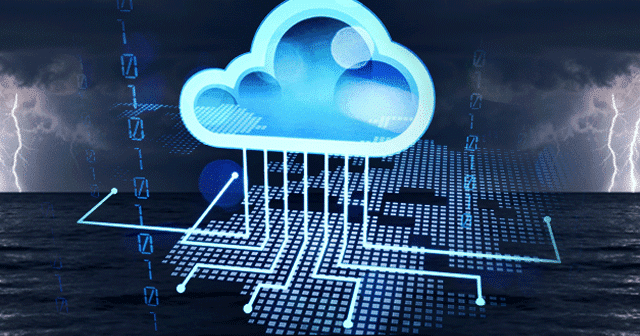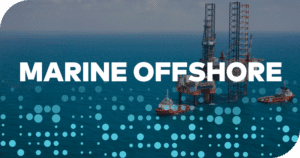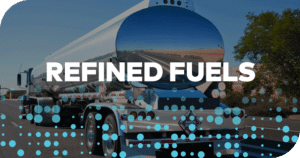How Can I Incorporate Weather In Predictive Maintenance Algorithms?

Computer algorithms are used in predictive maintenance to collect and process critical data related to the condition of equipment and assets owned and operated by your organization. Tools that use a customized prediction model to monitor the signs of deterioration and other anomalies in those assets (a process called “condition monitoring”) would then signal maintenance is required. Predictive maintenance is one of the ways that predictive analytics algorithms can be put to use for the benefit of your marine, shipping, or offshore company.
DTN Marine Weather API is an all-in-one solution which integrates our marine weather data and analytics services into your systems. Using cutting edge cloud technology, we tune our global suite of Metocean forecast models to match your unique organizational needs.
By integrating weather data into your existing systems your company will stay ahead of adverse weather in precise locations that could impact your maintenance plans. Clearly seeing your operations in relation to the weather will mean you can reduce the impact of weather on your activities and introduce cost savings in response to information supplied by predictive maintenance algorithms.
In what way can predictive maintenance help the shipping industry? How does unpredictable weather get in the way? Is it possible to overcome this problem by incorporating weather monitoring tools into your existing preventative maintenance systems?
These three questions will be considered in this article.
How predictive maintenance helps
Predictive maintenance gives your organization or shipping company the advantage in sustaining assets such as vessels and offshore equipment in peak condition by means of a maintenance plan that affords maximum efficiency.
Predictive maintenance algorithms use data including: all necessary maintenance, remaining useful life (RUL), historical data, maintenance records, operating conditions, failure patterns, regression models, and much more. Employing predictive maintenance algorithms can make the difference between your organization knowing the time to failure of a part and simply making an educated guess.
Under a preventative maintenance plan, an organization would normally carry out the maintenance work according to certain pre-set usage or time parameters and would possibly require relevant data be gathered manually. In contrast, a predictive maintenance plan results in long-term cost savings because data collection and condition monitoring are done using technology. In response to larger amounts of data, your company can more accurately plan maintenance and schedule action only when it is actually required.
How do predictive maintenance and deep learning algorithms help shipping companies in real-life scenarios? Being able to predict failures or the remaining useful life of parts and equipment on a ship, for example, allows the shipping company to plan maintenance well in advance. Subsequently, your company experiences fewer delays due to unexpected repairs needing to be carried out.
Advance warning of necessary maintenance also solves the problem of last minute purchases of new equipment in locations where the cost of quality items is very high. Additionally, you are not obligated to purchase from suppliers who are not trusted and proven already.
Forming a prediction model unique to your company using our predictive maintenance tools will help you glean information from large amounts of collected data and set up warning well enough in advance to prevent such costly surprises and to allow for maintenance to be carried out conveniently, often before a ship embarks on its next sea voyage.
Predictive maintenance and weather challenges
Predictive maintenance tools and our streaming data logistics allow for seamless maintenance procedures planning. Usually, the duration of the maintenance task can be shortened resulting in significant cost savings.
Interestingly, when simulations have been carried out to assess the economic benefits of predictive maintenance, companies have often insisted on adding in the potential restrictions. They have been especially careful to factor in weather restrictions since this is the reality facing every company in the marine, shipping, and offshore industries.
Weather is a major factor in making some maintenance complicated and even dangerous. DTN understands the importance of integrating weather observation and forecasting tools into your existing systems to enable you to work around the weather, make maintenance activities more efficient, and to prevent accidents.
Knowing the subtle details and understanding the nuances of current maritime weather conditions and developing weather will give your company the advantage it needs. Our streaming data with accurate, high-resolution detail will become vital to cost planning in your organization.
Highly accurate maritime weather information is important whether that maintenance activity needs to be carried out on a vessel, or involves maintenance to offshore equipment where maritime travel is necessary to accomplish that work.
Weather at sea differs greatly from weather over land. High winds, storms, waves, and swells all have a major impact on vessels. Detailed wave information for example related to height, direction, frequency, and other factors are necessary to make informed decisions in the smooth execution of your planned maintenance activities.
Integrating weather prediction with predictive maintenance
The most unpredictable factor in any maritime operation is always the weather but this obstacle can be largely overcome with resulting time, fuel, and cost-saving benefits by having the right weather monitoring API integrated into your organization’s internal systems. While some shipping companies are leading the way with advanced implementations of weather data, many are still early on their journey.
The DTN Marine weather API can automatically reroute vessels well ahead of time to avoid danger zones. It also gives you access to expert analysis of data collected. More detailed and accurate weather data along with deep learning and the accompanying expert analysis will produce confident decisions by ship operators.
The DTN Marine weather API is part of a suite of APIs called DTN Marine Content Services. Clearly seeing your operations in relation to the weather by integrating these within your in-house systems means you can stay ahead of adverse weather impacts in precise locations. Thanks to the enhanced visual data and the depth of data available you will be able to make informed decisions resulting in the flawless execution of all your shipping operations.









 Comprehensive weather insights help safeguard your operations and drive confident decisions to make everyday mining operations as safe and efficient as possible.
Comprehensive weather insights help safeguard your operations and drive confident decisions to make everyday mining operations as safe and efficient as possible.